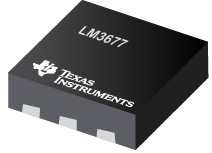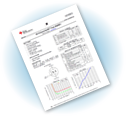How do you extend the life of your electric motor?

Many industrial processes rely heavily on the efficient operation of electric motors. However, through extended use, motors can become worn and less efficient, driving associated costs up for businesses.
The initial cost of an electric motor makes up just two percent of its lifecycle cost. With maintenance and repairs occupying such a large cost share in relation to electric motors, motor rewind specialist, Houghton International, has shared some tips for extending the life of an electric motor.
Adequate lubrication
A motor needs to be adequately lubricated given its many intricate rotating parts. Whether the motor uses grease or oil, lubricants separate rolling or sliding surfaces, minimising friction and heat to reduce overall wear. They also work to prevent corrosion and contamination.
Over- or under-lubrication can cause major problems with an electric motor. When under-lubricated, there is not enough oil or grease to protect the motor’s internal parts, leaving it susceptible to wear and tear. When the opposite occurs and the motor is over-lubricated, shields can become damaged and the oil or grease can lose their lubricating capability, as caused by rising operating temperatures caused by friction.
Optimal lubrication is a key factor in extending the life of a motor. Lubrication should always be undertaken according to manufacturer guidelines or the motor’s lubrication plate. This will help determine how often the motor will need to be oiled or greased and the type and grade of the lubrication that is needed.
The oil or grease used must, of course, be compatible, otherwise efforts at lubrication could be fruitless. Failure to choose the correct grease or oil can have varying degrees of impact, from mildly increased bearing wear to complete machine failure. It can also lead to unusual increases in:
- Heat generation
- Metal wear
- Vibration
- Noise
- Unusual colour shifts in lubricants
- Foreign particles
- Leaks caused by viscosity changes
- Foaming
- Emulsion formation
- Fluid separation
As a general rule of thumb, use the same oil or grease that is already in the motor bearings.
Temperature increases
An increase in temperature could cause significant damage to a motor. There are a number of reasons why temperature may increase, including overloading, under-voltage, over-voltage and improper ventilation. Because the incorrect temperature can significantly impact the performance of an electric motor, it’s important to monitor and maintain the correct temperature.
Allow the motor to cool and this type of temperature damage will likely be avoided. Keep its operating environment free of dirt and debris to ensure vents do not get obstructed and prevent hot air from being recirculated throughout the motor.
If the temperature increases suddenly, it could be an indication of another problem. Monitor changes to prevent issues from arising.
Regular maintenance
In addition to the above, regular maintenance is important. There are three main types of maintenance - preventative, predictive and reliability-based maintenance.
- Preventative maintenance: As the name suggests, preventative maintenance aims to discover issues before they have an opportunity to take effect. This type of maintenance can include electrical tests, measuring winding resistance and mechanical assessments.
- Predictive maintenance: Relying on trend analysis, predictive maintenance is the process of forecasting when maintenance or repairs will be required. In essence, this allows you to predict the lifespan of the motor’s parts.
- Reliability-based maintenance: Through motor analysis, reliability-based maintenance allows you to establish the most suitable maintenance solution to ensure motor longevity. This type reduces maintenance to the most cost-effective activities.
Similar articles
More from Houghton International
- Don’t put maintenance on the backburner 13th May 2021
- How static motor testing can support preventative maintenance 24th March 2021
- Newcastle engineering business celebrates record year 21st March 2019
- The financial impact of machine down-time on UK industry 12th February 2019












Write a comment
No comments